As the Paris Olympics draw to a close, ceding the stage to the Paralympics, I thought I would share a few impressions of the last weeks in Paris filled with the Olympic spirit. In July before the Opening Ceremony, a national poll revealed that only 12% of French were “enthusiastic” about the Games taking place in Paris. The talk was of predicted chaos in transport, security concerns, and a general feeling that any Parisian in their right mind would be fleeing the city to spend holidays elsewhere. Someone I told I was staying in town for part of the Olympics said to me, oh, that must be because you are American.
A week before the Opening Ceremony, the preparations were in full swing,
with the Olympic rings on the Eiffel Tower,
Venus of Milo as colorful Olympians in front of the Assemblée nationale (French parliament),
spectator tribunes set up along the Seine, and the country flags hoisted onto bridges.
On July 26, the day of the Opening Ceremony, the skies were grey, the kind of sky that seems to be threatening downpours at any moment, heavy with anticipation of incoming deluge — made heavier by the arson attacks on multiple train routes the night before. This spring and early summer had been unseasonably cold and wet, even as temperatures elsewhere were punching through thresholds for hottest days and months ever recorded. Meanwhile here, Parisians were asking, is this it? Is this our summer?
So when the day of the Opening Ceremony — famously taking place outside on the Seine river instead of inside a stadium — dawned with a forecast of grey and rain, it seemed like more of the same in this ‘year without a summer’. Earlier in the week, the theater director Thomas Jolly, creative director of the spectacle, had been quoted as saying, “If the weather is nice and we have a golden hour as planned, on time, it will be absolutely wonderful and very, very beautiful. If it rains, then please send me a real summer storm, with lightning, noise and thunder, because that will be cinematic. But if it’s gray and raining, then I will be really very unhappy.” (quoted from the NYT)
That evening, the rain really wanted to be present, oscillating between a steady drizzle and a veritable deluge during the ceremony itself. Jolly and his team were nevertheless able to pull off a spectacle that dazzled over one billion spectators worldwide with this floating ceremony down 6 kilometers of the Seine (the French word for the stage, la scène, is pronounced the same as the river Seine that runs through the heart of the city). The last time such a riverine spectacle took place on the Seine was almost 300 years ago, in celebration of King Louis XV marrying his daughter to the prince of Spain.
The ceremony took place like a theater piece, with 12 scenes unfolding as athletes floated down the river in boats. Some highlights, I found, were Aya Nakamura singing and dancing with the Republican Guard on the Pont des Arts, Celine Dion’s tribute to Edith Piaf atop a sparkling Eiffel Tower, a silver cavalier galloping down the Seine (courtesy of a double outrigger, or trimaran boat-base, and some remarkable craftsmanship), and the Olympic flame rising majestically in a balloon in the Tuileries. Nakamura, the French-Malian superstar, is known to incorporate words from slang and mix languages (like French, English, Arabic, and Bambara, the Malian language of her parents) into her songs. She performed in front of the golden dome of the Institut de France, the seat of the Académie française, founded in 1634 as the cultural institution whose mission is to protect the French language (« veiller sur la langue française »). The contemporary and the traditional came together, as Nakamura performed with the Republican Guard, guards of honor for official national ceremonies, who entered from the Louvre museum, the seat of classical arts. Besides parts of her own songs, she also performed a work by the legendary Charles Aznavour, himself French-Armenian, a nod to how diversity enriches our society and our arts. Maybe I particularly liked this scene because earlier in June, we celebrated my PhD advisor entering the French National Academy of Sciences under the same dome of the Institut de France.
Every day since the ceremony, it has been day after day of sun, including the most spectacular sunset the night AFTER the drizzling ceremony ….
…. and it is not just the weather — also the collective spirit seemed brighter, lighter, more joyful, more celebratory, close to carnival or a summer music festival in parts of the city. But don’t just take it from me. The French daily Le Monde headlined, “It is beyond beauty, it is magic”, and, “in the streets of Paris, enthusiasm overflows” (JO 2024 : « C’est au-delà de la beauté, de la magie », dans les rues de Paris, un enthousiasme débordant). In Germany, the Frankfurter Allgemeine Zeitung was struck on August 3 by "the collective ecstasy that reigns in Paris," and the "patriotic frenzy" following the sporting accomplishments of French athletes like: 22-year-old swimmer Léon Marchand who, as the ‘Marchand de rêves’ (merchant of dreams), brought home four golds in these Games and has capsized the public with ‘Marchand Mania’; 17-year old table-tennis star Félix Lebrun; veteran judo star Teddy Riner who helped France defend their mixed team gold title; and mountain bike cycling champion Pauline Ferrand-Prévôt who won gold here in Paris and will be the flag bearer for France in the Closing Ceremony together with Marchand. The Wall Street Journal reported that the biggest surprise of the Olympics was that even the French have nothing to complain about.
I am sure you have seen plenty of striking images of the iconic, ephemeral sporting sites, like beach volleyball at the Eiffel Tower (as Macron posted, “The brief? Make it iconic. We the French”), equestrian at Versailles (with Snoop Dogg & Martha Stewart in fitting attire), fencing in the Grand Palais, and swimming in the Seine for the triathlon (France invested heavily to clean up the river for Olympic events, spending €1.4 million, or about $1.5 million, to mixed results), and even surfing in Tahiti (an overseas country of France) . So I won’t belabor you with any sort of inventory of stadiums and sites but rather try to give a few highlights of my Olympic experience, as a way of sharing in case you didn’t make it to the summer Olympics this time around or spent less time watching TV than you would have liked!
In terms of other sporting events, I was lucky enough to get tickets on the resale website for an archery event and admire their incredible precision, hitting the target from a 70 m distance. I have to admit that my main motivation for choosing archery, besides the 1/8 final being within my budget, was that it was in one of the striking, ephemeral outdoor stadiums, built between the golden Dôme des Invalides and the gilded Pont Alexandre III bridge (unveiled for the 1900 Universal exhibition), with a view of the Eiffel Tower, as this photo can hopefully illustrate. Not pictured is the festival-like atmosphere with a balance of utter silence followed by roars of applause when athletes hit the bull’s-eye of 10.

Another highlight for me was the Olympic flame rising in a balloon. In the weeks before the Olympics, I kept taking walks to check out preparations to the progressively fewer still-open bridges. On one of these walks across the Passerelle Léopold Sédard Senghor, one could see a white balloon amidst the trees in the Tuileries. Looking to the right is the Musée d’Orsay, and I was thinking back to working with curators there on a painting, one of the largest in their collection, by Victor Navlet in 1855, showing a view of Paris from a balloon. I started to think, what if that giant white thing in the Tuileries were a nod to the history of air balloons in Paris, a French invention, and what if it were to house the Olympic flame? How theatrical, beautiful, and poetic would that be… I slipped the date 1783, the year of the first manned balloon ascents, to someone who works at the Louvre who confirmed with a wink that indeed, the Olympic flame would rise in a balloon.
So I was in rapt suspense until the final moments of the Opening Ceremony, when 100-year old French cyclist Charles Coste, in his wheelchair in the pouring rain, passed the Olympic torch to French sports legends Marie-José Pérec et Teddy Riner, who then illuminated this balloon in the Tuileries that ascended into the sky as the Eiffel Tower sparkled in the distance. And in a paradox, that fire is actually water! The ‘flame’ is really watery mist illuminated by LED lights to give the impression of a flickering fire (with the Olympic flame in a small lantern nearby). The helium-filled balloon was designed by Mathieu Lehanneur, with the support of the French energy company Engie.
In case you are as much of a history nerd as me, here is a brief parenthesis of some history of air balloons in France, with a cameo by Benjamin Franklin. If not, please skip ahead :)
Man has long dreamed of free flight, and the first ways of achieving it did not come by emulating a bird, but by emulating a bubble, or a cloud. On November 21, 1783, brothers Joseph-Michel and Jacques-Étienne Montgolfier achieved the first successful manned free ascent at the Château de la Muette — now home to the OECD, as my friend who had worked there made sure I had not forgotten! A few days later, in competition with the Montgolfier brothers, Jacques Alexandre César Charles (of Charles’ Law, for the science enthusiasts) and his fellow inventor Nicolas-Louis Robert made their own attempt at free flight. On December 1, 1783, this manned ascent, in a balloon made buoyant by hydrogen gas instead of warmed air, took place in the Tuileries garden, with an enraptured audience of 400,000 people, the largest outdoor gathering to-date and half the population of Paris at the time.
For the December 1, 1783 Tuileries balloon ascent, even Benjamin Franklin, then US ambassador to France, was in attendance, and he wrote in a letter that day,
“all Paris was out, either about the Tuilleries, on the Quays & Bridges, in the Fields, the Streets, at the Windows, or on the Tops of Houses, besides the Inhabitants of all the Towns & Villages of the Environs. Never before was a philosophical Experiment so magnificently attended.”
This quote reminded me of the expression that, the more things change, the more they stay the same. The description that “all Paris was out, either about the Tuilleries, on the Quays & Bridges” could easily be applied to the following evenings (the balloon rose each night until the 11th of August in the Tuileries garden), though Franklin would have had a hard time recognizing the glistening screens in everyone’s hands to capture the moment.

It is something touching to have the Olympics in your hometown, filled with heartfelt pride, and my mind is filled with images such as the emblematic balloon rising in the sky like a full moon, and the ephemeral stadiums around the city that will stay in my memory for many years to come. I was reminded in a visceral way of the magic of the Olympics, bringing together people from around the world and celebrating the pinnacle of sports achievement. Now I already look forward to the Winter Olympics in Milano Cortina and the summer Olympics in 2028 in Los Angeles — and in the short-term, to watching the Closing Ceremony tonight.
I hope you have a wonderful and restorative August ahead, filled with moments of joy and relaxation,
Anna Lea





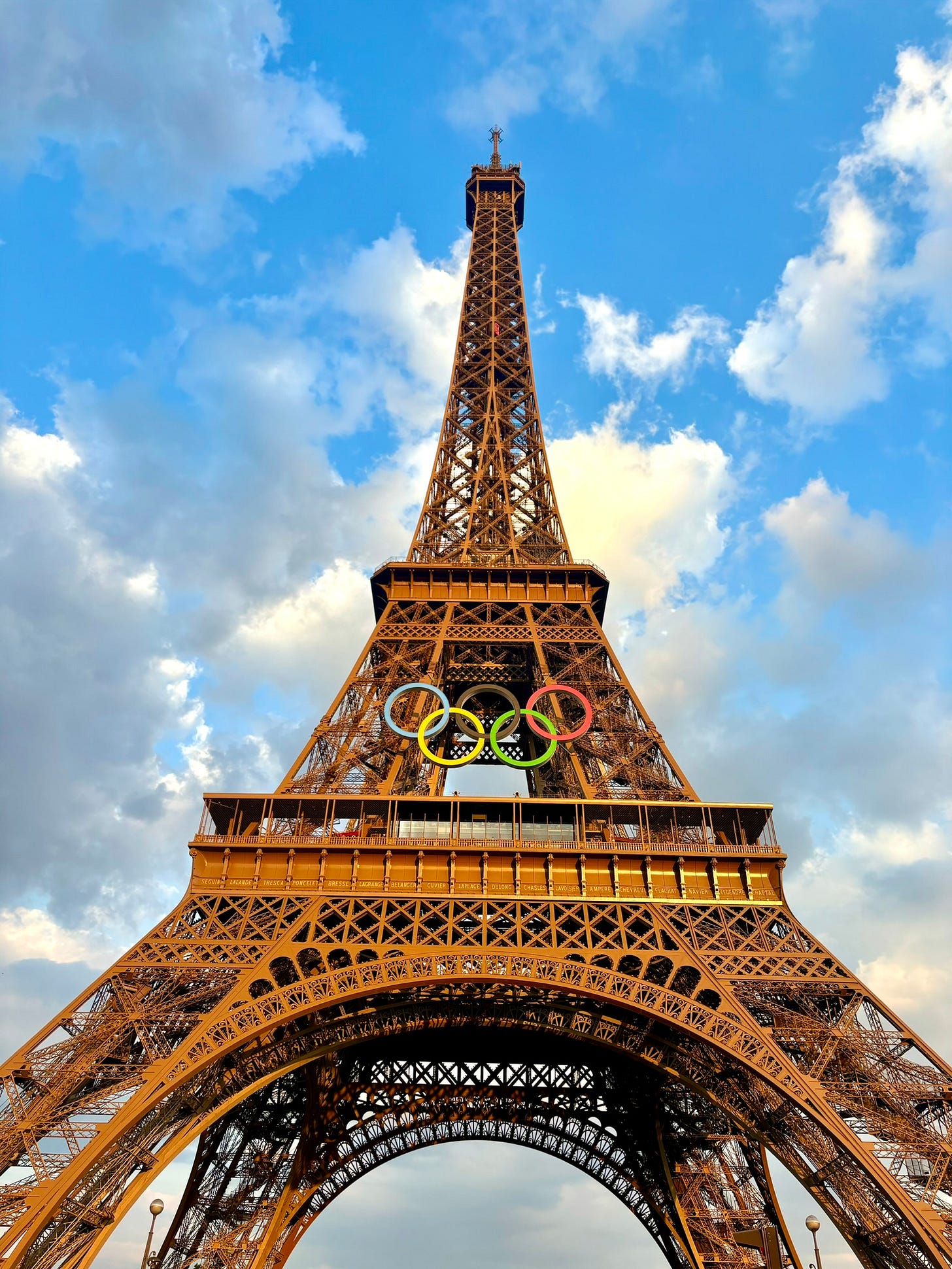
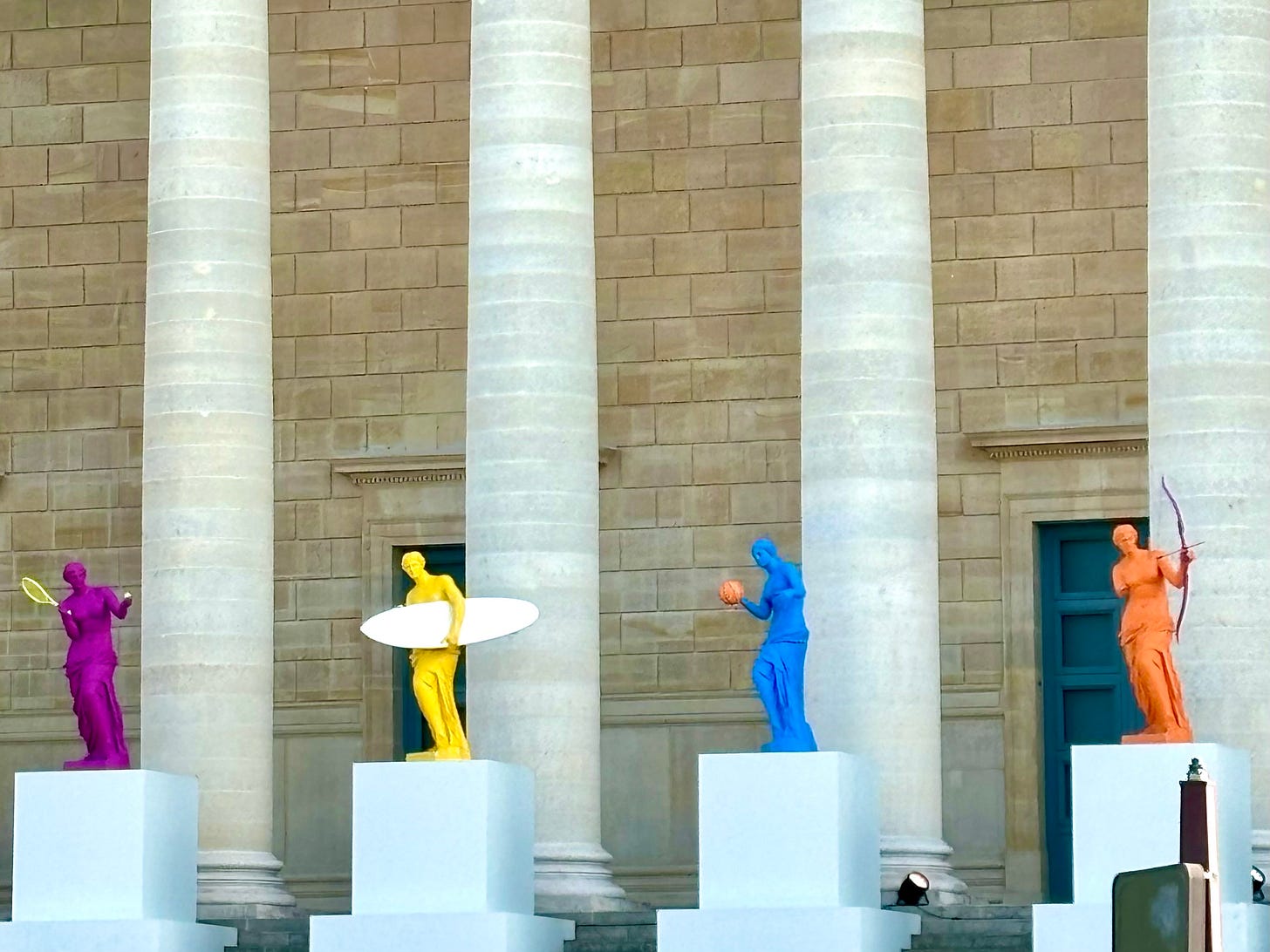
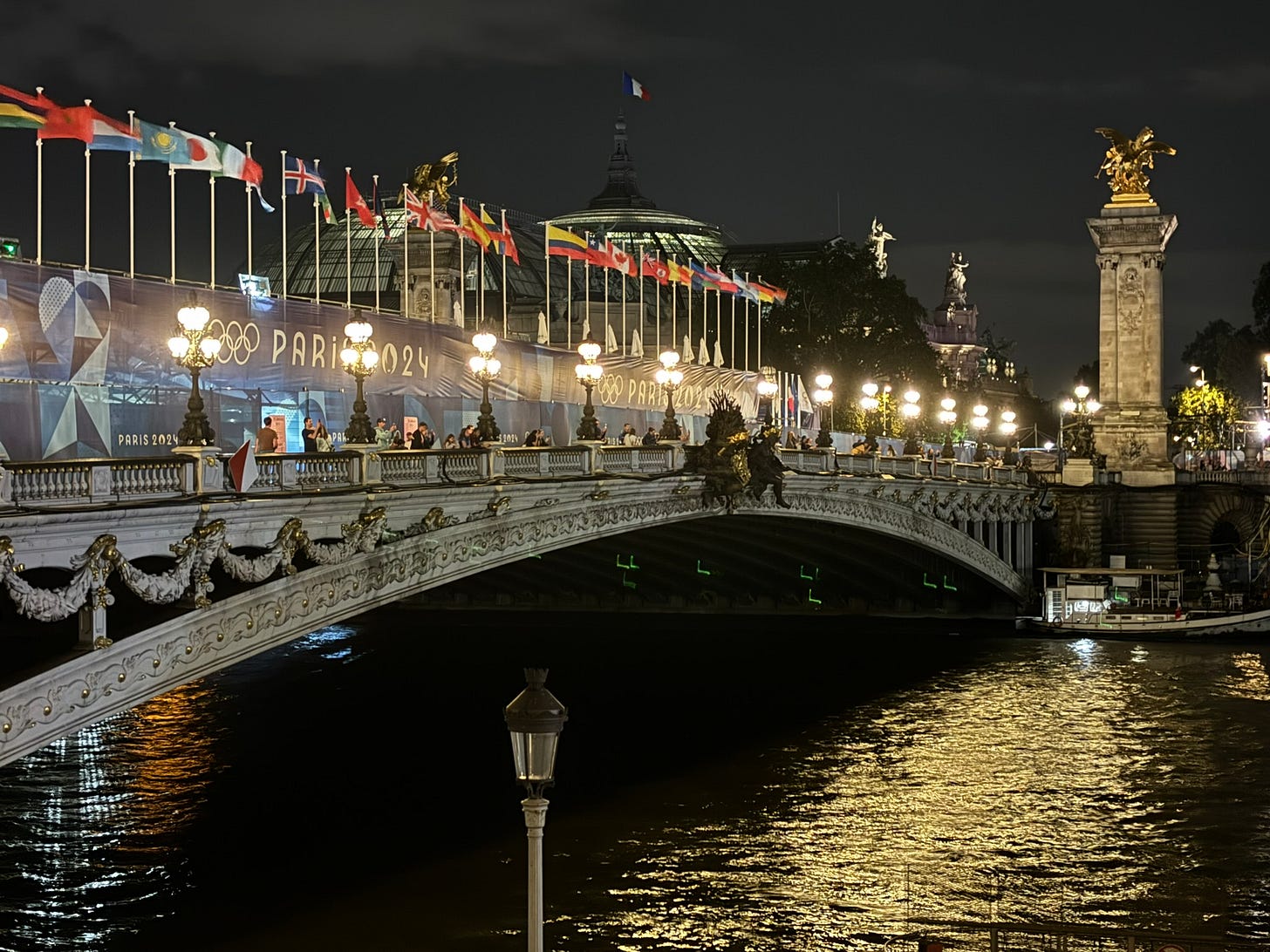
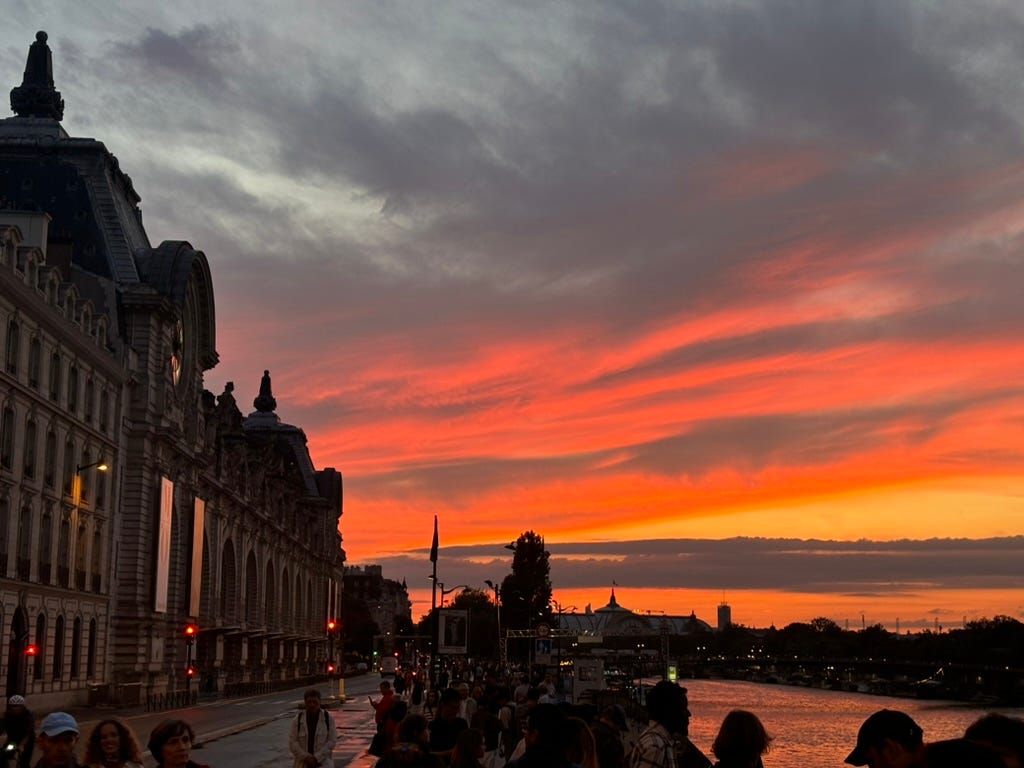
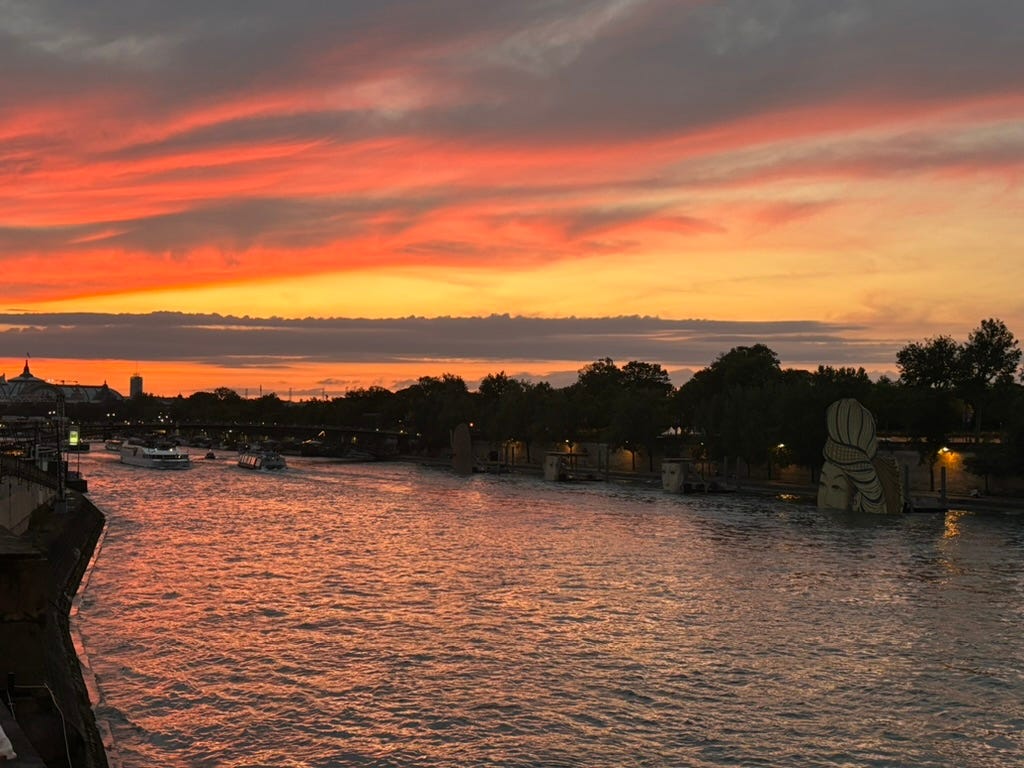
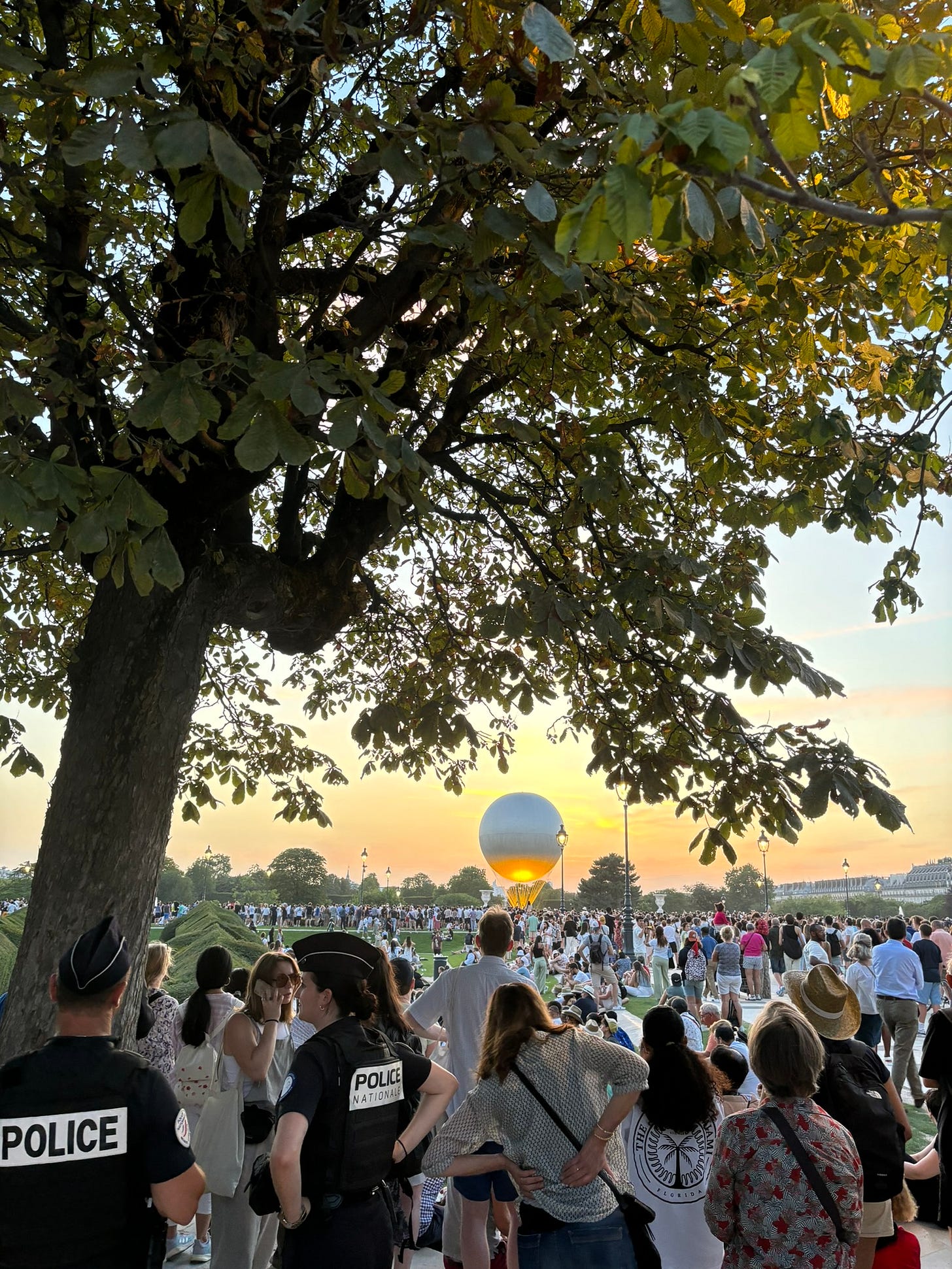
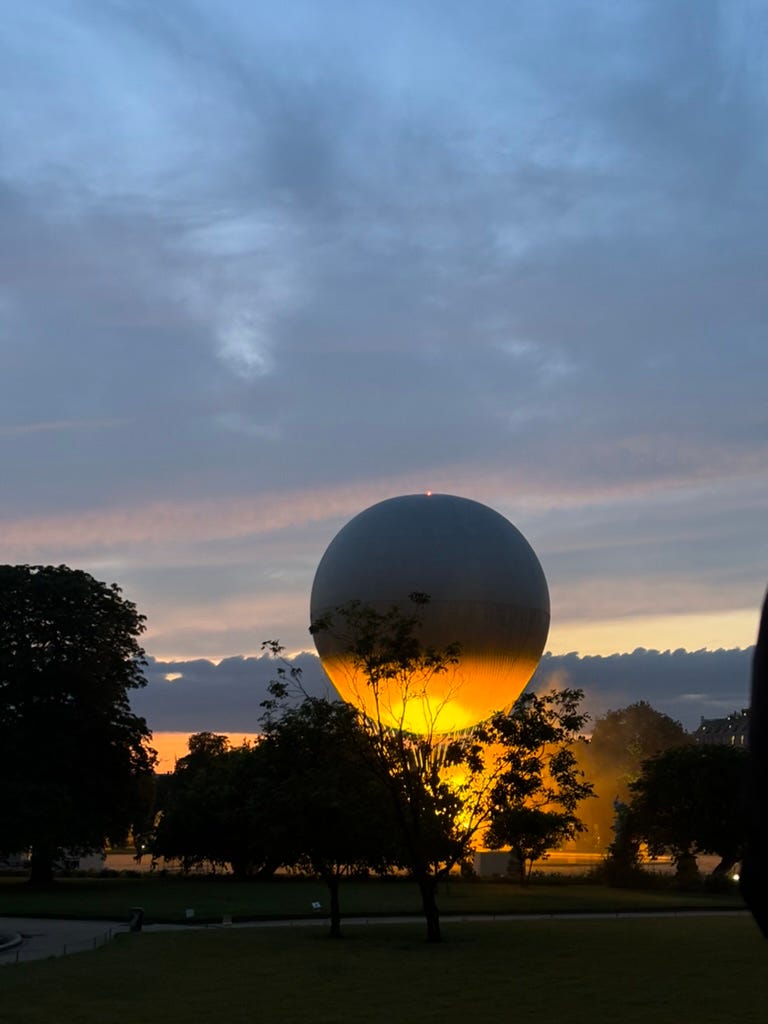
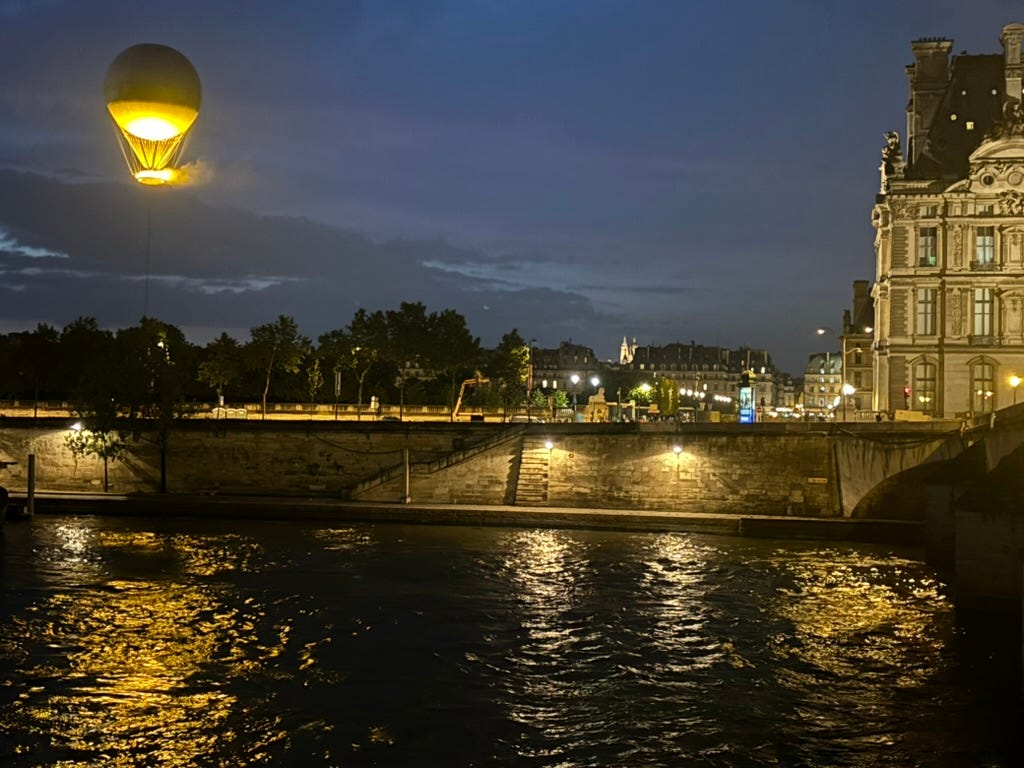

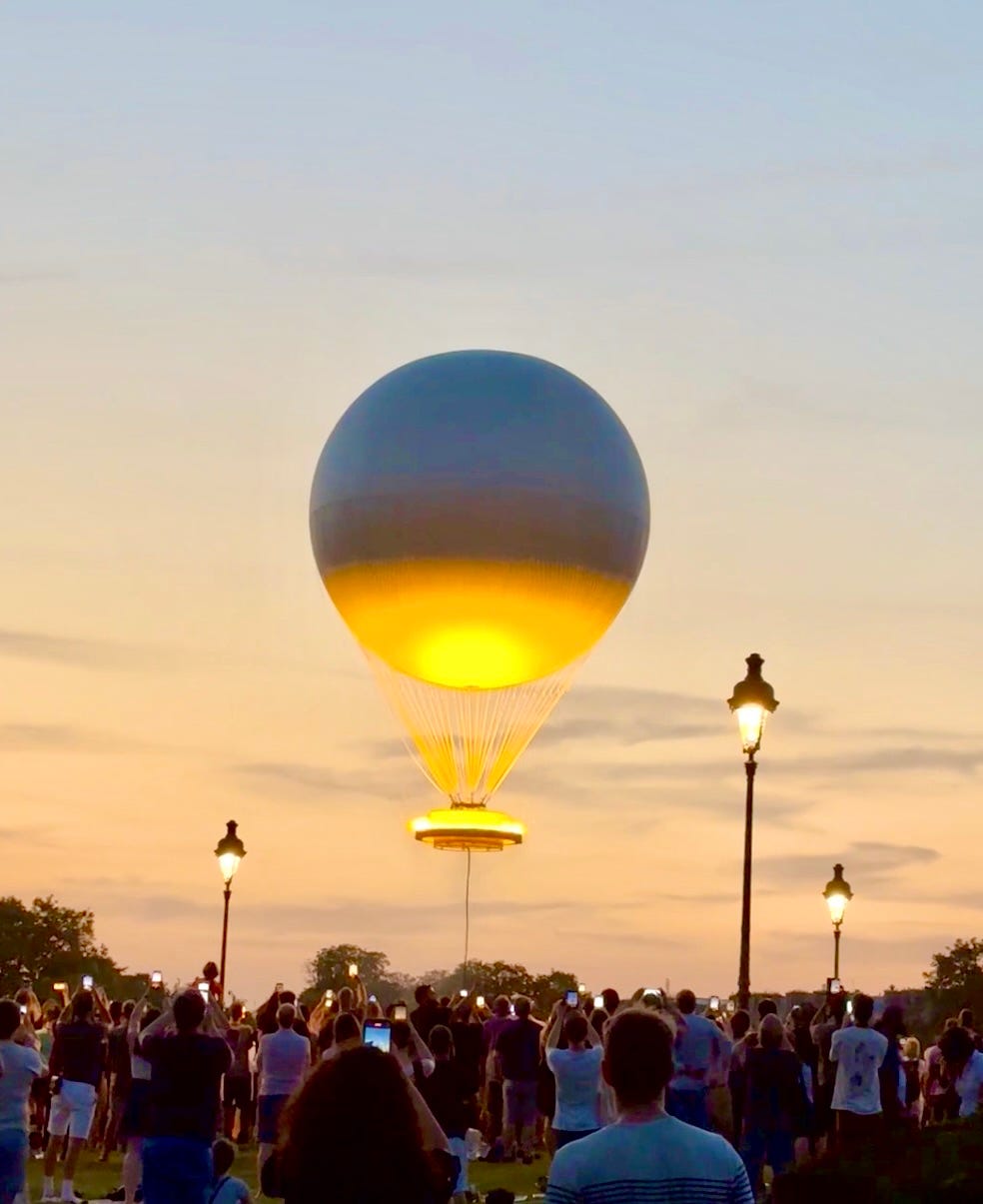


A beautiful synopsis 💙🤍❤️